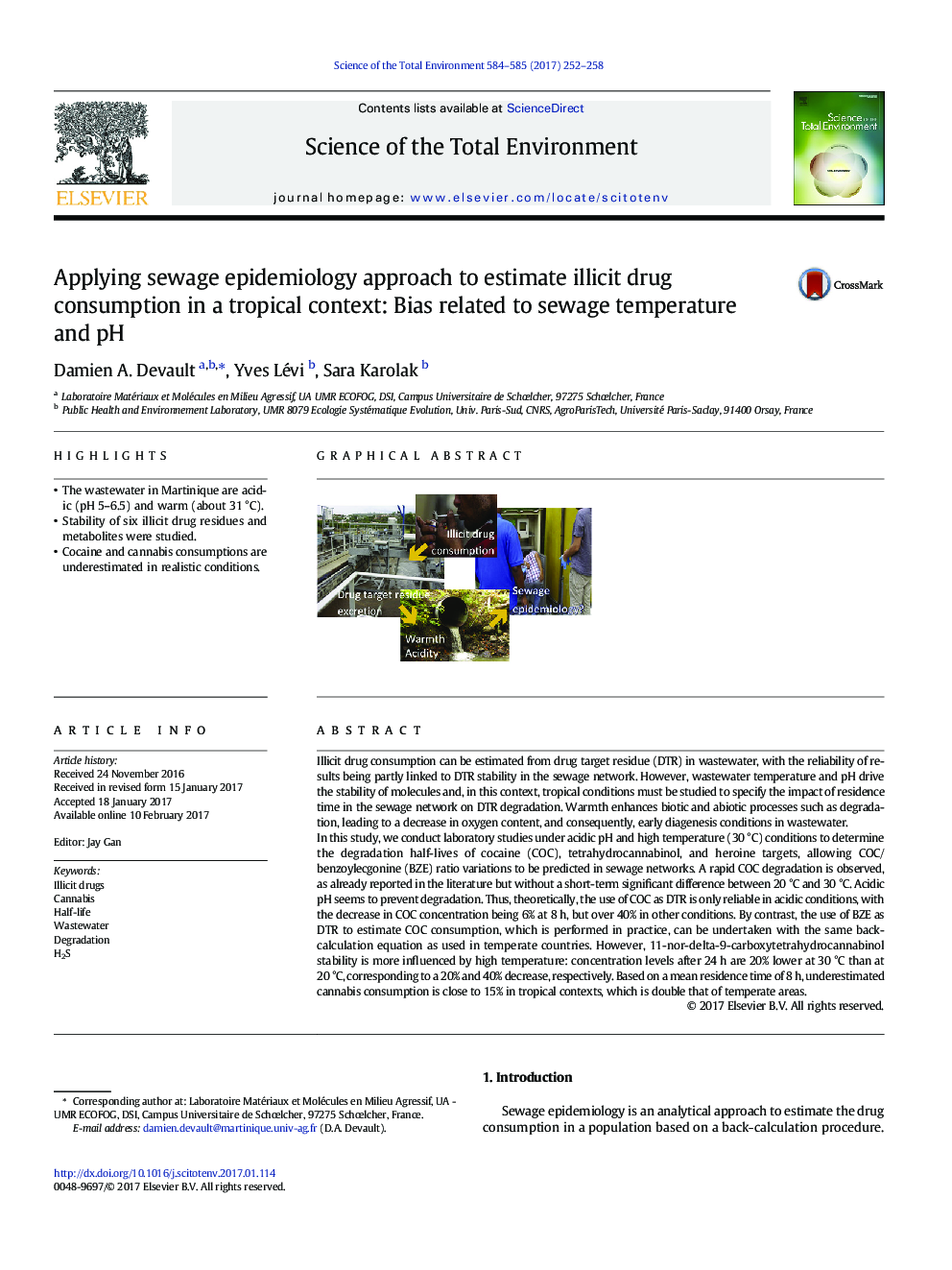| کد مقاله | کد نشریه | سال انتشار | مقاله انگلیسی | نسخه تمام متن |
|---|---|---|---|---|
| 5751867 | 1619708 | 2017 | 7 صفحه PDF | دانلود رایگان |

- The wastewater in Martinique are acidic (pH 5-6.5) and warm (about 31 °C).
- Stability of six illicit drug residues and metabolites were studied.
- Cocaine and cannabis consumptions are underestimated in realistic conditions.
Illicit drug consumption can be estimated from drug target residue (DTR) in wastewater, with the reliability of results being partly linked to DTR stability in the sewage network. However, wastewater temperature and pH drive the stability of molecules and, in this context, tropical conditions must be studied to specify the impact of residence time in the sewage network on DTR degradation. Warmth enhances biotic and abiotic processes such as degradation, leading to a decrease in oxygen content, and consequently, early diagenesis conditions in wastewater.In this study, we conduct laboratory studies under acidic pH and high temperature (30 °C) conditions to determine the degradation half-lives of cocaine (COC), tetrahydrocannabinol, and heroine targets, allowing COC/benzoylecgonine (BZE) ratio variations to be predicted in sewage networks. A rapid COC degradation is observed, as already reported in the literature but without a short-term significant difference between 20 °C and 30 °C. Acidic pH seems to prevent degradation. Thus, theoretically, the use of COC as DTR is only reliable in acidic conditions, with the decrease in COC concentration being 6% at 8 h, but over 40% in other conditions. By contrast, the use of BZE as DTR to estimate COC consumption, which is performed in practice, can be undertaken with the same back-calculation equation as used in temperate countries. However, 11-nor-delta-9-carboxytetrahydrocannabinol stability is more influenced by high temperature: concentration levels after 24 h are 20% lower at 30 °C than at 20 °C, corresponding to a 20% and 40% decrease, respectively. Based on a mean residence time of 8 h, underestimated cannabis consumption is close to 15% in tropical contexts, which is double that of temperate areas.
151
Journal: Science of The Total Environment - Volumes 584â585, 15 April 2017, Pages 252-258